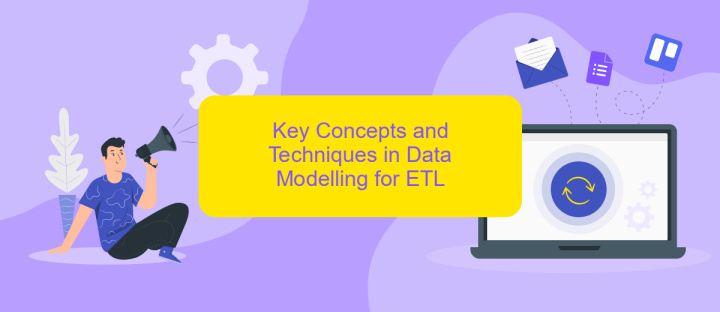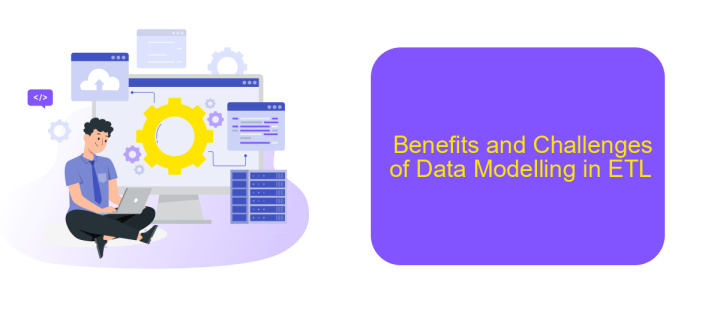What is Data Modelling in ETL
Data modeling in ETL (Extract, Transform, Load) is a crucial process that defines how data is structured, stored, and accessed within a data warehouse. It involves creating a blueprint of the data architecture, ensuring data integrity, consistency, and efficiency. This article explores the fundamentals of data modeling in ETL, highlighting its importance in effective data management and decision-making.
Introduction to Data Modelling
Data modeling is a crucial step in the ETL (Extract, Transform, Load) process, as it defines how data is structured and stored in a database. By creating a clear and organized data model, businesses can ensure that data is easily accessible, consistent, and reliable for analysis and decision-making.
- Defines data entities and relationships
- Ensures data consistency and integrity
- Facilitates data integration from multiple sources
- Improves data quality and accuracy
- Supports efficient data retrieval and analysis
Effective data modeling requires a deep understanding of the business requirements and the data sources involved. Tools like ApiX-Drive can simplify the integration process by automating data extraction and transformation from various sources, ensuring that the data model remains up-to-date and accurate. By leveraging such services, organizations can streamline their ETL workflows and focus on deriving valuable insights from their data.
Understanding the Importance of Data Modelling in ETL

Data modelling in ETL (Extract, Transform, Load) processes is crucial for ensuring data integrity, consistency, and accuracy. By creating a structured framework for data, organizations can effectively manage and utilize their information assets. This structured approach helps in identifying relationships between different data entities, which in turn aids in efficient data transformation and loading. Without proper data modelling, the ETL process can become chaotic, leading to potential data loss, redundancy, and errors.
Moreover, data modelling facilitates better decision-making by providing a clear and organized view of data. It also enhances data integration, making it easier to combine data from multiple sources. Tools like ApiX-Drive can significantly streamline this process by automating data integration tasks, ensuring seamless data flow between various applications. Utilizing such services not only saves time but also reduces the risk of manual errors, thereby improving the overall efficiency of ETL processes.
Key Concepts and Techniques in Data Modelling for ETL

Data modelling in ETL (Extract, Transform, Load) involves structuring data for efficient processing and analysis. It ensures data consistency, quality, and accessibility across different systems. Effective data modelling is crucial for making informed business decisions and optimizing data workflows.
- Entity-Relationship (ER) Modelling: Defines the relationships between data entities, helping to organize and visualize data structures.
- Normalization: Reduces data redundancy by organizing fields and table relationships, ensuring data integrity.
- Dimensional Modelling: Uses facts and dimensions to simplify complex data structures, enhancing query performance and reporting.
- Data Mapping: Aligns source data with target data structures, facilitating accurate data transformation and loading.
- API Integration: Tools like ApiX-Drive streamline data integration from various sources, ensuring seamless data flow and synchronization.
Incorporating these key concepts and techniques in data modelling for ETL processes enables organizations to manage data efficiently and derive actionable insights. Leveraging services like ApiX-Drive can further enhance the integration and automation of data workflows, ensuring reliable and up-to-date information across systems.
Benefits and Challenges of Data Modelling in ETL

Data modelling in ETL (Extract, Transform, Load) processes offers significant benefits by providing a structured framework for data integration and analysis. It ensures data consistency, enhances data quality, and facilitates better decision-making by creating a clear representation of data relationships and dependencies. This structured approach also simplifies data management and reduces redundancy, making it easier to maintain and update data systems.
However, data modelling in ETL also presents several challenges. One of the primary challenges is the complexity involved in designing accurate and efficient data models that can handle large volumes of data from diverse sources. Additionally, ensuring data integrity and consistency throughout the ETL process can be difficult, especially when dealing with real-time data integration.
- Improved data quality and consistency
- Enhanced decision-making capabilities
- Simplified data management and maintenance
- Reduced data redundancy
To address these challenges, tools like ApiX-Drive can be invaluable. ApiX-Drive facilitates seamless integration between various data sources and applications, automating the data transfer and transformation processes. This not only streamlines the ETL workflow but also ensures that data remains consistent and up-to-date, ultimately enhancing the overall efficiency of data modelling efforts.


Best Practices for Data Modelling in ETL
Effective data modeling in ETL processes requires a clear understanding of the business requirements and the data sources involved. Start by identifying the key data entities and their relationships, ensuring that the model aligns with the business goals. Utilize normalization techniques to eliminate redundancy and improve data integrity, but also consider denormalization where performance gains are necessary. Documenting the data model thoroughly is crucial for maintaining consistency and facilitating communication among team members.
Another best practice is to implement robust data validation and transformation rules to ensure data quality throughout the ETL process. Automate these processes as much as possible using reliable tools and services. For instance, ApiX-Drive can streamline data integration by connecting various applications and automating data workflows, reducing manual intervention and the risk of errors. Regularly review and update the data model to adapt to evolving business needs and technological advancements, ensuring it remains efficient and relevant.
FAQ
What is Data Modelling in ETL?
Why is Data Modelling important in ETL processes?
What are the common types of data models used in ETL?
How does ApiX-Drive help with data modelling in ETL?
What are the challenges of data modelling in ETL processes?
Strive to take your business to the next level, achieve your goals faster and more efficiently? Apix-Drive is your reliable assistant for these tasks. An online service and application connector will help you automate key business processes and get rid of the routine. You and your employees will free up time for important core tasks. Try Apix-Drive features for free to see the effectiveness of the online connector for yourself.

